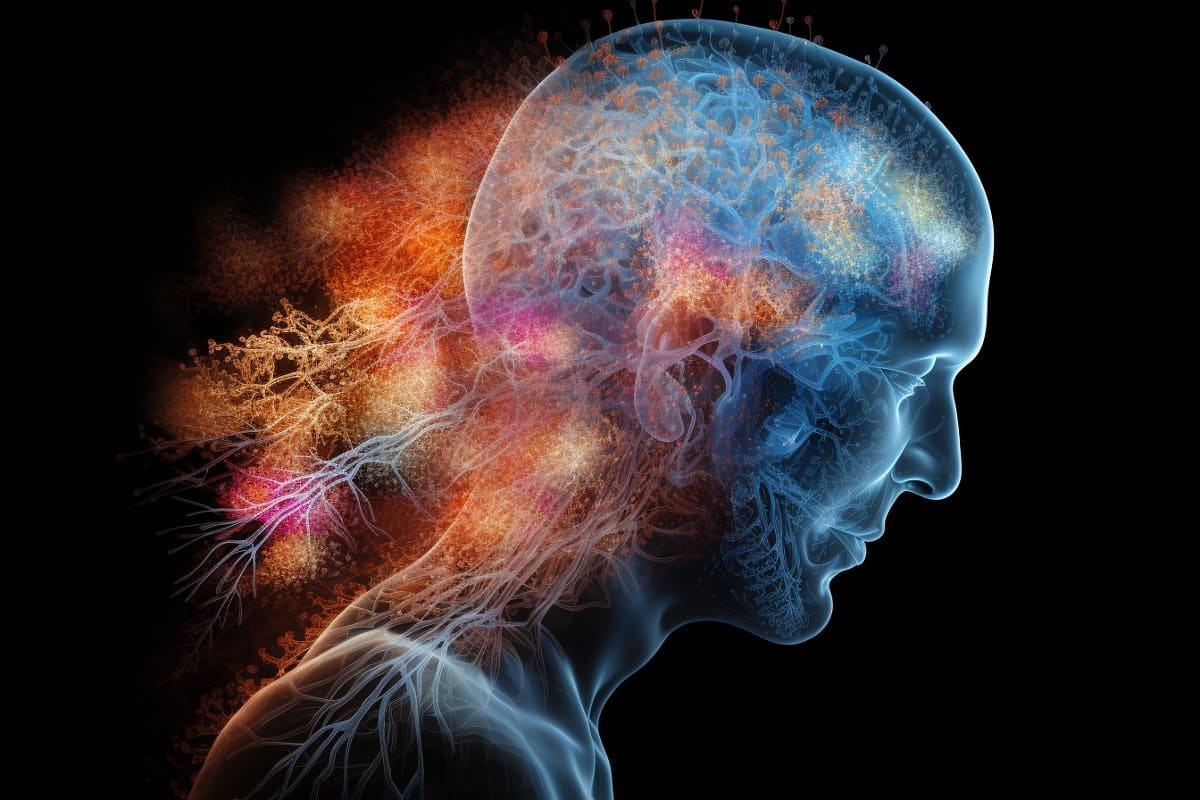Summary: Researchers have made significant strides in understanding the neurological process of dying.
Their study reveals that during anoxia, or oxygen deprivation, the brain undergoes a series of changes, including a massive release of glutamate and a surge in gamma and beta waves, potentially linked to near-death experiences. This is followed by a ‘wave of death’ – a high-amplitude wave marking the transition towards total cessation of brain activity.
The study, focusing on rats, found that this wave originates in the neocortex’s layer 5 pyramidal neurons and can potentially be reversed under certain conditions, offering new insights into preserving brain function during resuscitation.
Key Facts:
- The ‘wave of death’ in the brain, marking the transition to total cessation of brain activity, originates in the neocortex’s layer 5.
- This wave can be reversed if resuscitation occurs within a specific time window, indicating the possibility of preserving brain function.
- The study provides a deeper understanding of the neural mechanisms as death approaches, challenging the notion of a flat EEG as a definitive marker of ceased brain functions.
Source: Paris Brain Institute
Death is a difficult concept to define from a neurological point of view. It is not a precise moment that marks the switch from life to death, but a process that lasts several minutes and which, in some cases, can be reversible.
In a previous study, researchers from the “Dynamics of Epileptic Networks and Neuronal Excitability” team at Paris Brain Institute showed that after a long period of oxygen deprivation—called anoxia—brain activity undergoes a cascade of successive changes that can now be described precisely.
When the brain stops receiving oxygen, its stores of ATP, the cells’ fuel, are rapidly depleted. This causes a disruption in the electrical balance of neurons and a massive release of glutamate, an essential excitatory neurotransmitter in the nervous system.

“Neural circuits seem to shut down at first… Then we see a surge in brain activity—specifically an increase in gamma and beta waves,” Séverine Mahon, a researcher in neuroscience, explains.
“These waves are usually associated with a conscious experience. In this context, they may be involved in near-death experiences reported by people who have survived cardiorespiratory arrest.”
After that, the activity of the neurons gradually diminishes until a state of perfect electrical silence— corresponding to a flat electroencephalogram—is reached. However, this silence is quickly interrupted by the depolarization of neurons, which takes the form of a high-amplitude wave known as the “wave of death”, which alters the function and structure of the brain.
“This critical event, called anoxic depolarization, induces neuronal death throughout the cortex. Like a swan song, it is the true marker of transition towards the cessation of all brain activity”, Antoine Carton-Leclercq, PhD student and first author of the study, adds.
Until now, researchers did not know where the wave of death is initiated in the cortex or whether it propagates homogeneously across all cortical layers.
“We already knew that it is possible to reverse the effects of anoxic depolarization if we manage to resuscitate the subject within a specific time window,” the researcher adds.
“We still had to understand in which areas of the brain the death wave is likely to do the most damage to preserve brain function as much as possible.”
Following the path of the wave of death
To answer these questions, the researchers used, in rats, measurements of local field potentials and recordings of the electrical activity of individual neurons in different layers of the primary somatosensory cortex—an area that plays a crucial role in body representation and processing of sensory information.
They then compared the electrical activity of these different layers before and during anoxic depolarization.
“We noticed that neuronal activity was relatively homogeneous at the onset of brain anoxia. Then, the wave of death appeared in the pyramidal neurons located in layer 5 of the neocortex and propagated in two directions: upwards, i.e. the surface of the brain, and downwards, i.e. the white matter,” Séverine Mahon explains.
“We have observed this same dynamic under different experimental conditions and believe it could exist in humans.”
These findings also suggest that the deeper layers of the cortex are the most vulnerable to oxygen deprivation—probably because the pyramidal neurons in layer 5 have exceptionally high energy needs. However, when the researchers reoxygenated the rats’ brains, the cells replenished their ATP reserves, leading to the repolarization of neurons and the restoration of synaptic activity.
“This new study advances our understanding of the neural mechanisms underlying changes in brain activity as death approaches. It is now established that, from a physiological point of view, death is a process that takes its time… and that it is currently impossible to dissociate it rigorously from life.
“We also know that a flat EEG does not necessarily mean the definitive cessation of brain functions,” Prof. Stéphane Charpier, head of the research team, concludes.
“We now need to establish the exact conditions under which these functions can be restored and develop neuroprotective drugs to support resuscitation in the event of heart and lung failure.”
About this neuroscience and death research news
Author: Marie Simon
Source: Paris Brain Institute
Contact: Marie Simon – Paris Brain Institute
Image: The image is credited to Neuroscience News
Original Research: Open access.
“Laminar organization of neocortical activities during systemic anoxia” by Séverine Mahon et al. Neurobiology of Disease
Abstract
Laminar organization of neocortical activities during systemic anoxia
The neocortex is highly susceptible to metabolic dysfunction. When exposed to global ischemia or anoxia, it suffers a slowly propagating wave of collective neuronal depolarization that ultimately impairs its structure and function. While the molecular signature of anoxic depolarization (AD) is well documented, little is known about the brain states that precede and follow AD onset.
Here, by means of multisite extracellular local field potentials and intracellular recordings from identified pyramidal cells, we investigated the laminar expression of cortical activities induced by transient anoxia in rat primary somatosensory cortex.
Soon after the interruption of brain oxygenation, we observed a well-organized sequence of stereotyped activity patterns across all cortical layers. This sequence included an initial period of beta-gamma activity, rapidly replaced by delta-theta oscillations followed by a decline in all spontaneous activites, marking the entry into a sustained period of electrical silence.
Intracellular recordings revealed that cortical pyramidal neurons were depolarized and highly active during high-frequency activity, became inactive and devoid of synaptic potentials during the isoelectric state, and showed subthreshold composite synaptic depolarizations during the low-frequency period.
Contrasting with the strong temporal coherence of pre-AD activities along the vertical axis of the cortical column, the onset of AD was not uniform across layers. AD initially occurred in layer 5 or 6 and then propagated bidirectionally in the upward and downward direction. Conversely, the post-anoxic waves that indicated the repolarization of cortical neurons upon brain reoxygenation did not exhibit a specific spatio-temporal profile.
Pyramidal neurons from AD initiation site had a more depolarized resting potential and higher spontaneous firing rate compared to superficial cortical cells. We also found that the propagation pattern of AD was reliably reproduced by focal injection of an inhibitor of sodium‑potassium ATPases, suggesting that cortical AD dynamics could reflect layer-dependent variations in cellular metabolic regulations.







